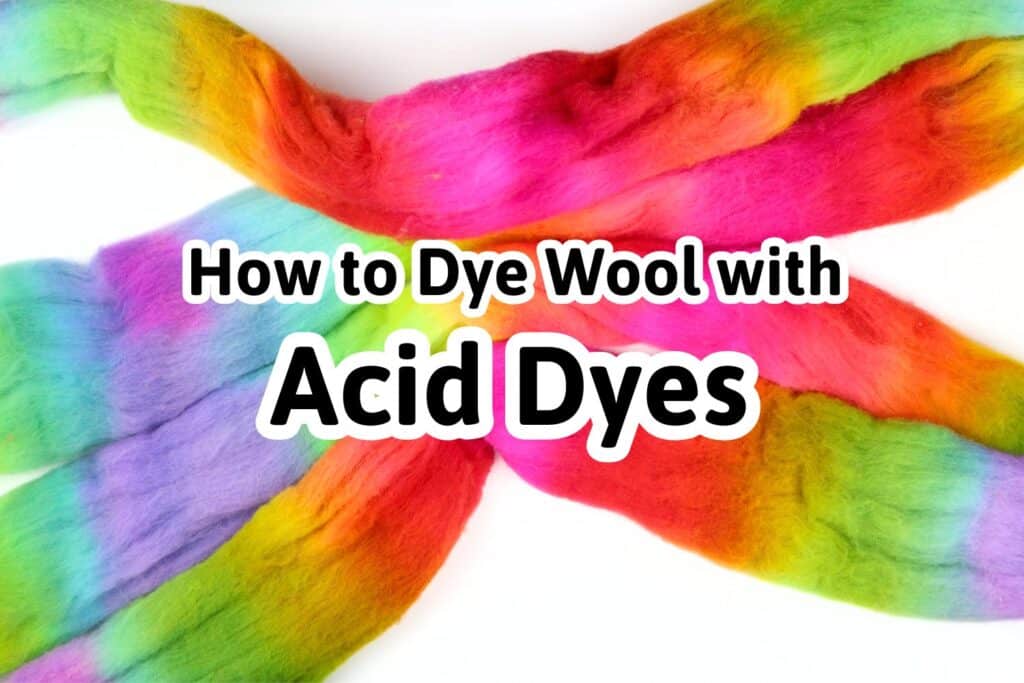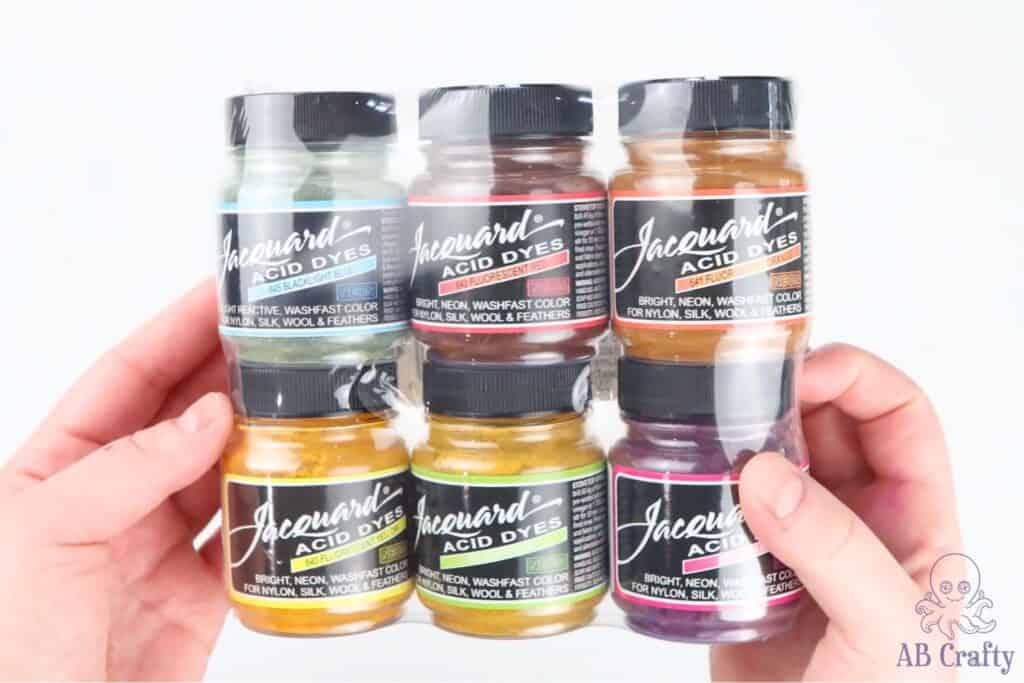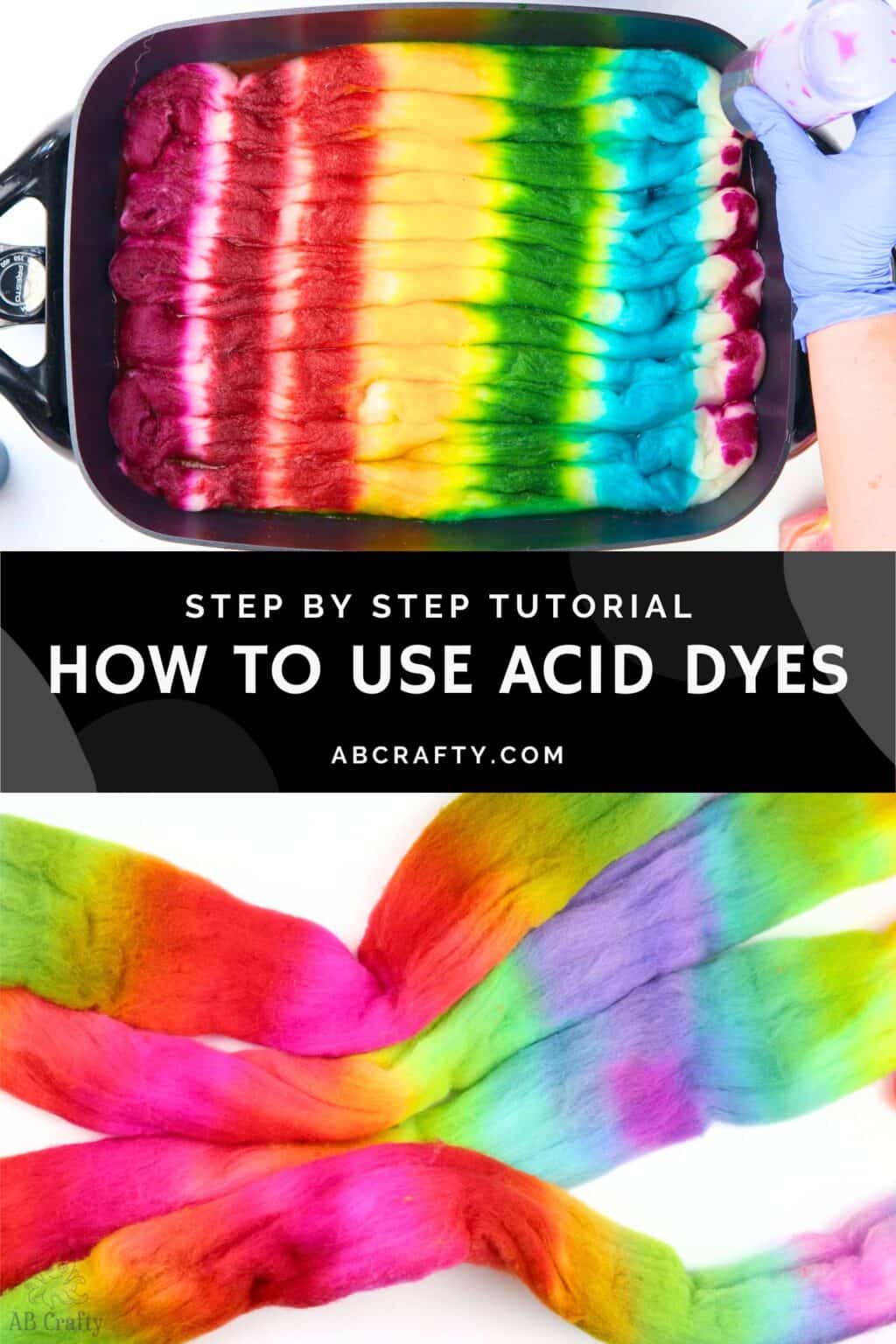Jacquard Acid Dyes the Easy Way
Home » Blog » DIYs and Craft Projects » Fiber Crafts » Jacquard Acid Dyes the Easy Way

Discover how to dye wool roving using Jacquard Acid Dyes, including their neon set that glows under blacklight. Follow this beginner-friendly step-by-step tutorial to create vibrant, UV-reactive fiber perfect for spinning or felting.
Table of Contents
If you’ve been curious about how to dye wool but feel intimidated by the process—don’t worry! This is the quick and easy (aka lazy crafter-approved) way to do it. Whether you’re prepping fiber for spinning or felting, this tutorial shows you how to get bright, professional results with minimal effort.
And for an extra bonus? The dyes I used glow under blacklight!
Note: Some links in this post may contain affiliate links, which means at no cost to you, I may earn a commission.
Get the latest DIY tutorials, reviews, and crafting updates
You'll never be spammed and can unsubscribe at any time
What Are Jacquard Acid Dyes?

First off, Jacquard is a brand that makes a lot of products in the dyeing space and one of their lines includes acid dyes.
Therefore Jacquard Acid Dyes are dyes to be used on wool, silk, and other protein fibers. Despite the name, they’re not acidic on their own—the “acid” refers to the mild acid (usually vinegar or citric acid) used during the dyeing process.
The Jacquard acid dye instructions are pretty straightforward, making them great for both beginners and experienced fiber artists.
Jacquard Coupon Code
Use code ABCRAFTY to get 20% off your order at Jacquard! This code works for their full line of acid dyes and more. It’s the perfect excuse to try out their glowing neon colors (find them here).
Don’t forget to pin it so you can easily come back to it later!

Materials for Dyeing Wool
- Wool Roving (I used this type, which is undyed 22 micron merino wool)
- Jacquard Acid Dyes (I used their neon line – use code ABCRAFTY for 20% off at Jacquard– in case the set is sold out you can also get individual colors here)
- Vinegar or Citric Acid
- Squeeze Bottles (these are similar to mine)
- Food Scale (this is the one I have)
- Electric Skillet (this is the one I have)
- Synthrapol (use code ABCRAFTY for 20% off at Jacquard)
- Spin Dryer (optional, but highly recommended if you do a lot of dyeing projects – the one I have no longer exists, but this one is similar)
- Respirator
- Gloves
In case Jacquard is sold out of their neon acid dye set, you can get the individual colors, linked below:


